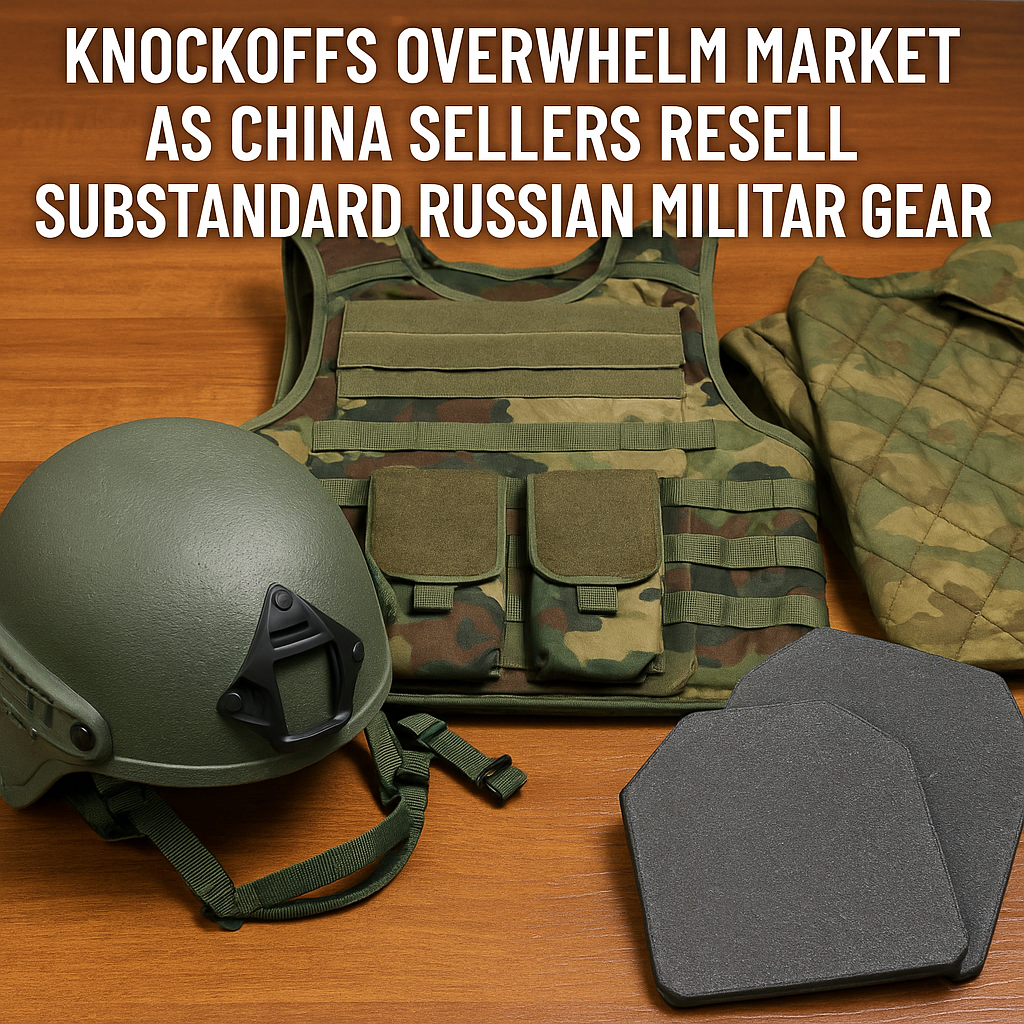In a recent report, authorities have uncovered a scheme in which Chinese nationals were involved in smuggling Russian military equipment out of Russia and selling inferior knockoffs back to the country.
Introduction to the Smuggling of Counterfeit Gear
The counterfeit goods included critical military gear such as bulletproof vests and uniforms, which had been copied using lower-quality materials. These products were reversed-engineered from original Russian military equipment, making them appear authentic, but they were far less effective and durable.
This illegal activity was discovered by Russian customs officials and reported in the Russian newspaper Izvestia. The trade of counterfeit military goods has raised alarms, as it affects not only the quality of the equipment being used but also the safety and reliability of Russian forces and individuals using these goods.
The Role of China in Supporting Russia’s War Efforts
Since the onset of the Russia-Ukraine war in February 2022, relations between China and Russia have grown stronger, with both nations increasing their trade, particularly in energy sectors like oil and gas.
China’s Bold J-36 Test Sends Stealthy Warning to U.S. F-47 NGAD
Despite international sanctions placed on Russia by the United States and the European Union, China has been accused of indirectly supporting Russia’s economy. Critics have argued that China is supplying goods with both civilian and military applications, which could help Russia’s wartime industries.
The growing bilateral trade between China and Russia has not only been beneficial for economic exchanges but also led to the supply of military products. One of the concerns is the growing number of dual-use items—goods that can be used for both civilian and military purposes—shipped across borders. These items, often knockoffs of more advanced Russian equipment, have reportedly ended up in Russian military supply chains, even though their quality may not always meet the necessary standards for battlefield conditions.
While China has become a major military power in its own right, it has long studied Russian military equipment to modernize its own armed forces. However, this smuggling operation has shown that China is also involved in producing and selling knockoff versions of Russian gear. These knockoffs are potentially being sold at lower prices, capitalizing on price differences and the high demand for military goods.
China’s Veiled Warning to US; WZ-9 Drone Could Detect F-35 and B-21
The Surge in Smuggling and Illicit Trade
Since the beginning of the war in Ukraine, shipments of dual-use goods, such as military gear, have increased dramatically. In response, Russia introduced strict export restrictions on products with military applications. Under these new rules, exporting military equipment without proper authorization carries severe criminal penalties, including up to seven years in prison.
Despite these laws, incidents of illegal exports continue to rise. One example involves a Chinese national who was caught in Moscow while trying to send two tactical vests, knockoffs of Russian military gear, back to China through the mail. The man was arrested, and the gear was confiscated. In another case, a student was detained after military equipment, including knockoff body armor and bulletproof plates, was discovered in his university dorm room. The student claimed that he had purchased the items through online ads.
These incidents suggest that the demand for counterfeit military goods is growing. The low cost of Chinese-made knockoffs compared to original Russian military equipment makes them an attractive option for some buyers. Russian military contractors and officials have expressed concern about the proliferation of substandard equipment in their own military ranks and the potential risks this poses.
From China’s Heartland to Guam in Minutes: DF-27’s Reach Stuns U.S. Command
Impact on the Military Market
According to experts, the growing illegal trade of counterfeit military goods has created a saturated market. The existence of trade and postal loopholes, particularly in international shipping, has made it easier for counterfeit goods to enter Russia. These cheaper, Chinese-made knockoffs of Russian military gear have found their way into the hands of both Russian and Ukrainian forces, further complicating the situation.
Some experts argue that while Chinese-made helmets are generally of acceptable quality, the knockoff body armor is far more problematic. They highlight the subpar design, poor ergonomics, and overall inferior protection that these counterfeits provide. This creates a significant concern for those relying on such gear for safety, as the protection provided by a bulletproof vest or body armor is essential in combat situations.
The appeal of cheaper alternatives may explain why counterfeit goods are circulating so widely. While original Russian military gear is often of higher quality, it is also more expensive. In contrast, the Chinese knockoffs offer a more affordable option, which some may consider a reasonable trade-off despite the lower performance. This market dynamic has led to an increase in the production and distribution of counterfeit goods, making it harder for authorities to control and regulate the flow of these items.

